Sonic Unyon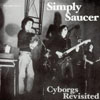
"This is some heavy metalloid music," declared Edgar Breau as he lookedout from the roof of the Lloyd D. Jackson Shopping Center one day in1975. "It's a song about the future, where unless you have a metalbody, they aren't gonna let you walk the streets. No kidding." To thepassing, most likely confused consumers that milled about below them,Simply Saucer must have seemed as if they had truly come from someparanoid, metallic future. In reality, they were a bunch of guys fromHamilton, Ontario who had
Funhouse and
White Light / White Heatscorched into their brains, plus a prescient affinity for dirty guitarsand electronic manipulations. Over the course of their brief existence,Simply Saucer put out only one release, 1978's "She's a Dog" b/w "I CanChange My Mind" 45. That is, until 1989 saw the first issue of the
Cyborgs RevisitedLP, a compilation that combined the songs from their mall performancewith six never before heard studio tracks (engineered by fellowCanadians Daniel and Robert Lanois, who went on to produce PeterGabriel, Bob Dylan, and U2.)
Cyborgs only saw the Simply Saucercult grow, and for good reason. Now, Sonic Unyon rescues this lostclassic from out of print oblivion, as well as adding seven unreleaseddemos plus the "She's a Dog" single. The result is a comprehensivetestament to the brilliance of Simply Saucer's blend of vicious guitarslop and experimentation with analog electronics. Songs like "InstantPleasure" and "Electro Rock" begin as simple odes of teenage crushesand idle imagination before disintegrating into maelstroms of freneticguitar. The noisy, angular indulgence becomes draws even closer toabstraction when sine waves and synthesizers float in, creating a murkyatmosphere that's equal parts temper tantrum and icy stare. The garagestandard of the sexually frustrated teen, a la the Stooges "No Fun"takes on a less than innocent tone with Simply Saucer. "I'm cyanideover you," moans Breau on "Nazi Apocalypse," and later on the new demo"Little Sally," he menacingly bursts open on a rival, "I wanna killthat other guy / I'll punch him right between the eyes." "Mole Machine"is an instrumental assault whose bleats of sharp, metallic noise wouldnot sound out of place on a Sonic Youth record. The climax of
Cyborgs Revisitedcomes with "Illegal Bodies," the song Breau described as heavymetalloid music. It is a live ten-minute epic that careens aboutBreau's ranting and raving about the future of cyborgs before eruptinginto a free form solo section that is positively mind bending. Theseven songs that make up the newly released demos were recorded afterthe departure of Ping Romany's electronics, and are far less maddenedthan the previous tracks. They do, however, retain the attitude andcharm, and make for an excellent addendum to
Cyborgs. The"She's a Dog" single, while good for completeness, falls far short ofthe bulk of Simply Saucers material, serving as the last gasp of a bandthat had already begun to call it a night. It's a minor stumble on anotherwise solid career-spanning document.
Cyborgs Revisited is the aural equivalent of a paranoid delusion, a psychotic episode that clutches tightly until it shakes itself apart.
samples:
 Ex Models torment their instruments, creating sounds that can be lookedupon as pushing the equipment to its limits or just plain making ithurt so that it screams in pain and joy. They are the latest masters ofthe no wave sound, emerging from the New York underground only severalyears ago and already boasting a mature sound and a loyal following. Zoo Psychologyis their second full-length, and it shows growth over their debut asthe band grows comfortable in some ways but branches out in others.These musicians want to dismantle the song structure, abating therelentless verse-chorus arrangements to allow for more adventurous andimprovisational terrain. At the same time, there is an overalldismemberment of melody and time signatures. All throughout, thebrothers Motia intertwine the screams of the guitars with the shrieksof Shahin, who seems to enjoy pushing his vocal cords until they don'teven have the will to relent. It's not easy listening, and it's not aneasy listen, either. It's organized disorder, with a fine sense ofhumor and a generous helping of tongue-in-cheek, particularly on thesong titles ("Fuck to the Music," "Brand New Panties," and "HeyBoner"). In fact, its the sexual charge that gets these songs across,despite the almost disjointed nature of the music. It's not foreveryone, but the near funk of "Hott 4 Discourse" and the jackhammer"What is a Price" can appeal to most anyone who likes post punk eardamaging noise. A band that's this unafraid to push their limits can'tdo anything but improve, and it'll be a strange and pleasureable rideevery time.
Ex Models torment their instruments, creating sounds that can be lookedupon as pushing the equipment to its limits or just plain making ithurt so that it screams in pain and joy. They are the latest masters ofthe no wave sound, emerging from the New York underground only severalyears ago and already boasting a mature sound and a loyal following. Zoo Psychologyis their second full-length, and it shows growth over their debut asthe band grows comfortable in some ways but branches out in others.These musicians want to dismantle the song structure, abating therelentless verse-chorus arrangements to allow for more adventurous andimprovisational terrain. At the same time, there is an overalldismemberment of melody and time signatures. All throughout, thebrothers Motia intertwine the screams of the guitars with the shrieksof Shahin, who seems to enjoy pushing his vocal cords until they don'teven have the will to relent. It's not easy listening, and it's not aneasy listen, either. It's organized disorder, with a fine sense ofhumor and a generous helping of tongue-in-cheek, particularly on thesong titles ("Fuck to the Music," "Brand New Panties," and "HeyBoner"). In fact, its the sexual charge that gets these songs across,despite the almost disjointed nature of the music. It's not foreveryone, but the near funk of "Hott 4 Discourse" and the jackhammer"What is a Price" can appeal to most anyone who likes post punk eardamaging noise. A band that's this unafraid to push their limits can'tdo anything but improve, and it'll be a strange and pleasureable rideevery time.

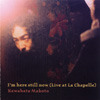 When talking about the music of Kawabata Makoto or his band AcidMothers Temple, it's difficult to avoid the issue of quality control.Because there will always be someone anxious to publish every sonicutterence that Makoto commits to tape, and because Makoto appears toindulge anyone who asks him for an album, the ratio of albums to fullythought-out ideas is weighted heavily towards the former. "I'm HereStill Now" is another unnecessary addition to his inexplicably growingcatalog. It is a mediocre, nearly bootleg-quality quality audiencerecording of an improvised solo guitar and sarangi concert he gave inToulouse in 2002. As an improviser, Makoto can be great in a rockcontext; when he plays in Acid Mothers Temple or with improv/rock bandsMusica Transonic or Mainliner, he can wail like hell. But on thisrecording he seems confused, even bored. He begins with the tentativedrone of feedback through a delay effect. If you've ever been around aguitarist who plays with a rack delay for the first time, you've heardthese sounds before. After ten minutes of noodling without arrivinganywhere, he switches to a bowed sarangi through tons of reverb. I getthe feeling that reverb here is used as a cheap way to imply gravity,to cover up the uncompelling music with an emotionally-chargedtechnological shorthand. He attempts a few directions here, but doesnot commit to any of them. Unsurprisingly, he finishes by turning hisdigital delay effects back on and doing the first trick again, only fora longer amount of time. It succeeds in becoming a drone only bydefinition, though I get the feeling that Makoto was trying for sometranscendental bliss such that Phil Niblock and Keiji Haino achieve.What could it mean that, when listening to "I'm Here Still Now", I hearthe musician's effects more than I hear the music he's making? And whydid some editor not remove the audible digital clip at the 20-minutemark, the sound of audience members coughing and shifting in thierseats, or of glasses clinking? Perhaps there is such a rush to releasemore Makoto product that the merit of each individual album is notfully considered. -
When talking about the music of Kawabata Makoto or his band AcidMothers Temple, it's difficult to avoid the issue of quality control.Because there will always be someone anxious to publish every sonicutterence that Makoto commits to tape, and because Makoto appears toindulge anyone who asks him for an album, the ratio of albums to fullythought-out ideas is weighted heavily towards the former. "I'm HereStill Now" is another unnecessary addition to his inexplicably growingcatalog. It is a mediocre, nearly bootleg-quality quality audiencerecording of an improvised solo guitar and sarangi concert he gave inToulouse in 2002. As an improviser, Makoto can be great in a rockcontext; when he plays in Acid Mothers Temple or with improv/rock bandsMusica Transonic or Mainliner, he can wail like hell. But on thisrecording he seems confused, even bored. He begins with the tentativedrone of feedback through a delay effect. If you've ever been around aguitarist who plays with a rack delay for the first time, you've heardthese sounds before. After ten minutes of noodling without arrivinganywhere, he switches to a bowed sarangi through tons of reverb. I getthe feeling that reverb here is used as a cheap way to imply gravity,to cover up the uncompelling music with an emotionally-chargedtechnological shorthand. He attempts a few directions here, but doesnot commit to any of them. Unsurprisingly, he finishes by turning hisdigital delay effects back on and doing the first trick again, only fora longer amount of time. It succeeds in becoming a drone only bydefinition, though I get the feeling that Makoto was trying for sometranscendental bliss such that Phil Niblock and Keiji Haino achieve.What could it mean that, when listening to "I'm Here Still Now", I hearthe musician's effects more than I hear the music he's making? And whydid some editor not remove the audible digital clip at the 20-minutemark, the sound of audience members coughing and shifting in thierseats, or of glasses clinking? Perhaps there is such a rush to releasemore Makoto product that the merit of each individual album is notfully considered. - 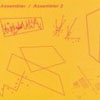 Released just a few months after the rigid 10th, Nobukazu Takemura's newest is an adventure in minimalism that is as restorative as a long vacation taken after going too long without a break. Too often have I heard sound collages that seem to go nowhere; they simply run about in circles covering the same old ground for the duration of fifteen or twenty minutes or more. Thankfully, Assembler/Assembler 2 is about as predictable as a piano falling out of a building.
Released just a few months after the rigid 10th, Nobukazu Takemura's newest is an adventure in minimalism that is as restorative as a long vacation taken after going too long without a break. Too often have I heard sound collages that seem to go nowhere; they simply run about in circles covering the same old ground for the duration of fifteen or twenty minutes or more. Thankfully, Assembler/Assembler 2 is about as predictable as a piano falling out of a building. Success in the music business, as honorable as it is fleeting, grants acertain immunity which allows artists a level of creative freedom. Suchliberties would be considered risky if indulged in by an unknown, butthe same measures taken by an established act with a good sales trackand a verbose publicist will often be viewed favorably. Groups likeRadiohead and Autechre fit that profile. However, the man behindUniform does not. His 2001 album for Mute Irony Isunder the 2nd Gen moniker achieved, at least, a dignified level ofmedia praise, being well-reviewed by both respectable and disgustingpublications alike. Its noisy, filthy style of hip hop found champions(and collaborators) in peers like Dälek and Techno Animal.Unfortunately, I doubt that either of those acts would have much lovefor his debut release as Uniform. Released on the growingpost-industrial record label Ad Noiseam, Not A Word lacks thesubstance of the 2nd Gen project. Nearly devoid of actual content, thealbum sounds much more like a collection of segues and interludes thana full-length album. This sixteen track disc could have beencomfortably reduced to a less pretentious, more concise EP, if eventhat. I'd offer more information and opinion about this release, but,in fairness, it doesn't deserve it. With any luck, Flicknives, the upcoming 2nd Gen follow-up album to be released on Quatermass, will prove to be a far more worthwhile listen.
Success in the music business, as honorable as it is fleeting, grants acertain immunity which allows artists a level of creative freedom. Suchliberties would be considered risky if indulged in by an unknown, butthe same measures taken by an established act with a good sales trackand a verbose publicist will often be viewed favorably. Groups likeRadiohead and Autechre fit that profile. However, the man behindUniform does not. His 2001 album for Mute Irony Isunder the 2nd Gen moniker achieved, at least, a dignified level ofmedia praise, being well-reviewed by both respectable and disgustingpublications alike. Its noisy, filthy style of hip hop found champions(and collaborators) in peers like Dälek and Techno Animal.Unfortunately, I doubt that either of those acts would have much lovefor his debut release as Uniform. Released on the growingpost-industrial record label Ad Noiseam, Not A Word lacks thesubstance of the 2nd Gen project. Nearly devoid of actual content, thealbum sounds much more like a collection of segues and interludes thana full-length album. This sixteen track disc could have beencomfortably reduced to a less pretentious, more concise EP, if eventhat. I'd offer more information and opinion about this release, but,in fairness, it doesn't deserve it. With any luck, Flicknives, the upcoming 2nd Gen follow-up album to be released on Quatermass, will prove to be a far more worthwhile listen. 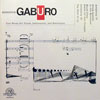 This collection is a curious combination of old and new. Gaburo, born1926 was trained as a composer in the old school and is clearlyinfluenced by pre-WW2 aesthetics and techniques but the music herecombines this with free-wheeling new-world invention in the age ofCage. The oldest of these five pieces from 1956 is a string quartetthat, while clearly comptetent, has more tutonic romanticism (in adecidedly Schoenberg style) than I prefer. Antiphony III and IV,dating from 62 and 67 respectively, both combine live musicians withelectronic music on tape, both set miniature poems by Virginia Hommel,and both aim to create a continuum between the sounds of the singersand instruments and the electronic sounds. The continuum was achievedby composing the pieces as a whole and orchestrating them withmusicians, recordings of the musicians, processed sounds from thoserecordings and synthetic sounds similar to all these. The result isconvincing and at times approaches the lyricism of Nono and Berio'selectro-acoustic music. But underlying it all is still clearlySchoenberg—Antiphony IV for tape and 16 voices being destinctlyreminicent of the choral work of the father of serialism. But there isalso a hint of Ligeti's Aventures and Nouvelles Aventures inthe more outlandish vocal techniques used. In these two pieces I findthat the combination of the old, in the formal and ensemble aspects,with the new, in the electronic and sound manipulation, actually worksvery well. They seem anchored in a familliar tradition while providingcompelling innovative personal expression. Mouth-Piece: Sextet for Solo Trumpet(1970) on the other hand is hideous. It is an excercise in extendedtechnique that would have been better left either to an improviser orto a composer who genuinely loves the trumpet. And that leaves The Flow of (u)a radically minimalistic piece for three voices all singing the samenote continuously using the "u" phoneme (i.e. "oo") for 23 minutes. Itis quintessential drone music that bears comparison to that of PhilNiblock. But while most drone music normally uses occasional changes tothe component tones this piece uses just the minutest continualvariation of pitch and tone color. The fact that this is sung by humanvoices is crucial to the success of the piece since the changing beatsand colors arise form the singers continually working to match pitchwith each other and to perfect their "u" sound. Extreme in itssimplicity it works in they way all good drone music works: bycaptivating attention and drawing one into facination with the minutedetail of the sound.
This collection is a curious combination of old and new. Gaburo, born1926 was trained as a composer in the old school and is clearlyinfluenced by pre-WW2 aesthetics and techniques but the music herecombines this with free-wheeling new-world invention in the age ofCage. The oldest of these five pieces from 1956 is a string quartetthat, while clearly comptetent, has more tutonic romanticism (in adecidedly Schoenberg style) than I prefer. Antiphony III and IV,dating from 62 and 67 respectively, both combine live musicians withelectronic music on tape, both set miniature poems by Virginia Hommel,and both aim to create a continuum between the sounds of the singersand instruments and the electronic sounds. The continuum was achievedby composing the pieces as a whole and orchestrating them withmusicians, recordings of the musicians, processed sounds from thoserecordings and synthetic sounds similar to all these. The result isconvincing and at times approaches the lyricism of Nono and Berio'selectro-acoustic music. But underlying it all is still clearlySchoenberg—Antiphony IV for tape and 16 voices being destinctlyreminicent of the choral work of the father of serialism. But there isalso a hint of Ligeti's Aventures and Nouvelles Aventures inthe more outlandish vocal techniques used. In these two pieces I findthat the combination of the old, in the formal and ensemble aspects,with the new, in the electronic and sound manipulation, actually worksvery well. They seem anchored in a familliar tradition while providingcompelling innovative personal expression. Mouth-Piece: Sextet for Solo Trumpet(1970) on the other hand is hideous. It is an excercise in extendedtechnique that would have been better left either to an improviser orto a composer who genuinely loves the trumpet. And that leaves The Flow of (u)a radically minimalistic piece for three voices all singing the samenote continuously using the "u" phoneme (i.e. "oo") for 23 minutes. Itis quintessential drone music that bears comparison to that of PhilNiblock. But while most drone music normally uses occasional changes tothe component tones this piece uses just the minutest continualvariation of pitch and tone color. The fact that this is sung by humanvoices is crucial to the success of the piece since the changing beatsand colors arise form the singers continually working to match pitchwith each other and to perfect their "u" sound. Extreme in itssimplicity it works in they way all good drone music works: bycaptivating attention and drawing one into facination with the minutedetail of the sound. 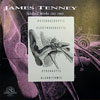 Tenney was the first composer to give a real workout to the computer composition techniques that would dominate the computer music scene from the 60s through to the 90s and that are still widely used today. He did this during two and a half years at Bell Telephone Labs beginning 1961 working closely with Max Mathews, the inventor of the MUSIC series of programming environments.
Tenney was the first composer to give a real workout to the computer composition techniques that would dominate the computer music scene from the 60s through to the 90s and that are still widely used today. He did this during two and a half years at Bell Telephone Labs beginning 1961 working closely with Max Mathews, the inventor of the MUSIC series of programming environments. I wonder what kind of shoes that members of A Northern Chorus wear. Ifeel confident in assuming that they are familiar with every nook andcranny of their footwear, from the wrinkles that ring their toes to thestrains in the laces. I say this because I take Spirit Flagsto be the product of some very attentive, and very detailed shoegazers;a deeply immersing listen that sweeps across you like a warm blanket.The album begins with the twinkling, lullaby melody of "Song and I,"and as the music slowly fades closer to the fore, the dreamy vocalharmonies reveal themselves hovering through the instruments, blendingthemselves perfectly, neither standing out nor going unnoticed butgiving the song an amazing buoyancy. The songs on Spirit Flagsare excursions in texture and depth, the shortest track falling justshort of the four-minute mark. Rarely does it seem that any track hasoverstayed its welcome, as the melodies and harmonies frequently expandand evolve into other forms amidst the guitar wash and plaintivecontributions of flute and violin. On "Let the Parrots Speak forThemselves" and "Take Your Canvas Elsewhere," the reedy lead vocals attimes evoke Dean Wareham, while often taking on a full-bodied tenor oftheir own. "Mombassa" is a somewhat darker track, mixing a spookyreverb with sampled sound bites of fire and brimstone preachersbellowing (seemingly at each other, but it's just the way the samplesare overlaid) about God knows what, something about not believing inthe resurrection. It makes for a rather effective mood piece, with thefervor and intensity of the speakers contrasting with the tentative,ethereal musical background like a splash of cold water in a warm bed."I Dreamt the World had Ended" continues where "Mombassa" began, withdark lyrics about the sky exploding and choking fire being enveloped ina less than menacing arrangement. It doesn't seem at all dissonant orout of place, however. It is, after all, just a dream. For the mostpart, A Northern Chorus inhabits a limited range of tempo, and whilesome dynamics in that respect might have added more power to some oftheir songs, clearly they were aiming for a more subdued attack. Thatsubtlety can be just as powerful as displayed in a brief break on'Eilan Donan," with the music suddenly disappearing as ghostlike vocalsintone, "We'll be right on your heels." In that short moment, it isimmensely affecting. Spirit Flags slowly seeps along, at timesbeautiful and comforting. Whatever kind of shoes A Northern Choruswears, they must be very interesting.
I wonder what kind of shoes that members of A Northern Chorus wear. Ifeel confident in assuming that they are familiar with every nook andcranny of their footwear, from the wrinkles that ring their toes to thestrains in the laces. I say this because I take Spirit Flagsto be the product of some very attentive, and very detailed shoegazers;a deeply immersing listen that sweeps across you like a warm blanket.The album begins with the twinkling, lullaby melody of "Song and I,"and as the music slowly fades closer to the fore, the dreamy vocalharmonies reveal themselves hovering through the instruments, blendingthemselves perfectly, neither standing out nor going unnoticed butgiving the song an amazing buoyancy. The songs on Spirit Flagsare excursions in texture and depth, the shortest track falling justshort of the four-minute mark. Rarely does it seem that any track hasoverstayed its welcome, as the melodies and harmonies frequently expandand evolve into other forms amidst the guitar wash and plaintivecontributions of flute and violin. On "Let the Parrots Speak forThemselves" and "Take Your Canvas Elsewhere," the reedy lead vocals attimes evoke Dean Wareham, while often taking on a full-bodied tenor oftheir own. "Mombassa" is a somewhat darker track, mixing a spookyreverb with sampled sound bites of fire and brimstone preachersbellowing (seemingly at each other, but it's just the way the samplesare overlaid) about God knows what, something about not believing inthe resurrection. It makes for a rather effective mood piece, with thefervor and intensity of the speakers contrasting with the tentative,ethereal musical background like a splash of cold water in a warm bed."I Dreamt the World had Ended" continues where "Mombassa" began, withdark lyrics about the sky exploding and choking fire being enveloped ina less than menacing arrangement. It doesn't seem at all dissonant orout of place, however. It is, after all, just a dream. For the mostpart, A Northern Chorus inhabits a limited range of tempo, and whilesome dynamics in that respect might have added more power to some oftheir songs, clearly they were aiming for a more subdued attack. Thatsubtlety can be just as powerful as displayed in a brief break on'Eilan Donan," with the music suddenly disappearing as ghostlike vocalsintone, "We'll be right on your heels." In that short moment, it isimmensely affecting. Spirit Flags slowly seeps along, at timesbeautiful and comforting. Whatever kind of shoes A Northern Choruswears, they must be very interesting.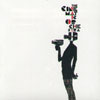 The concept of live music accompanying moving pictures is as old ascinema itself; pianists and organists often providing the soundtrack tothe images that danced on the screens in darkened movie houses. Inrecent years, some musicians have renewed the interest in silent filmsof the day by performing their modern compositions along as an updatedsoundtrack. For J. Swinscoe and his Cinematic Orchestra, such a task issecond nature, given the nature of the group's original concept thattheir name validates. Man With A Movie Camerais their current soundtrack to Russian film maker Dziga Vertov's 1929classic of the same name. As a variant of the title also appeared as atrack on last year's Every Day, the Cinematics would be themost likely candidates for such a project. The band recorded the disc'sseventeen tracks live in the studio with the augmentation of a stringtrio and percussionist for a more cohesive performance. Man With A Movie Camera is comprised of renamed workings of selections from Every Dayin which the live strings replace sampled ones, some new compositions,interludes and a few covers. "The Awakening of a Woman" is easilyidentifiable as last year's "Burn Out" from its slit-drum percussionintro and melodic strings progressions. The live performance andinstrumentation give this track a more organic feel in comparison tothe original recording. The newer "Odessa" and "The Magician" aredelicate piano pieces performed by Jon Ellis with a classical touchthat would probably sound all the more beautiful with the accompanyingvisuals for which they were intended. "Work It!" is best know by theaforementioned title track. Its mechanical feel of plucked strings andhaunting soprano saxophone intro are very powerful in the liveperformance setting. The busy latin-jazz groove of "Reel Life" isperformed almost note perfect from the remix "Evolution II" by thegroup's turntablist, Patrick Carpenter. Swinscoe and company again paytriubute to Lester Bowie and the Art Ensemble of Chicago with theirrenditions of the group's "Theme De Yoyo," "Theme Reprise" and "YoyoWaltz" which manage to capture a playful energy in a funky environment.A DVD of the group in performance accompanying the original Man With A Movie Camera film is due out this week, at which point this already great soundtrack should become part of a more powerful medium.
The concept of live music accompanying moving pictures is as old ascinema itself; pianists and organists often providing the soundtrack tothe images that danced on the screens in darkened movie houses. Inrecent years, some musicians have renewed the interest in silent filmsof the day by performing their modern compositions along as an updatedsoundtrack. For J. Swinscoe and his Cinematic Orchestra, such a task issecond nature, given the nature of the group's original concept thattheir name validates. Man With A Movie Camerais their current soundtrack to Russian film maker Dziga Vertov's 1929classic of the same name. As a variant of the title also appeared as atrack on last year's Every Day, the Cinematics would be themost likely candidates for such a project. The band recorded the disc'sseventeen tracks live in the studio with the augmentation of a stringtrio and percussionist for a more cohesive performance. Man With A Movie Camera is comprised of renamed workings of selections from Every Dayin which the live strings replace sampled ones, some new compositions,interludes and a few covers. "The Awakening of a Woman" is easilyidentifiable as last year's "Burn Out" from its slit-drum percussionintro and melodic strings progressions. The live performance andinstrumentation give this track a more organic feel in comparison tothe original recording. The newer "Odessa" and "The Magician" aredelicate piano pieces performed by Jon Ellis with a classical touchthat would probably sound all the more beautiful with the accompanyingvisuals for which they were intended. "Work It!" is best know by theaforementioned title track. Its mechanical feel of plucked strings andhaunting soprano saxophone intro are very powerful in the liveperformance setting. The busy latin-jazz groove of "Reel Life" isperformed almost note perfect from the remix "Evolution II" by thegroup's turntablist, Patrick Carpenter. Swinscoe and company again paytriubute to Lester Bowie and the Art Ensemble of Chicago with theirrenditions of the group's "Theme De Yoyo," "Theme Reprise" and "YoyoWaltz" which manage to capture a playful energy in a funky environment.A DVD of the group in performance accompanying the original Man With A Movie Camera film is due out this week, at which point this already great soundtrack should become part of a more powerful medium.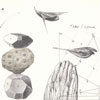 Tape's album Operamight be coming on the heels of the latest craze that pits guitarplucking and mouse clicking against each other in a sonic cage match ofsorts, but it is nevertheless a fine example of the way that digitaland acoustic instruments can work together seamlessly.The songs are made up of a variety of recorded instruments from guitarand horminca to melodica and accordian—instruments whose timbres arefaithfully maintained rather than spliced into a trillion fragmentedbits. The digital post-processing here serves to add a layer of grit tothe otherwise folky melodies that carry most of the songs, and tointerject the alien sounds that balance out the compositions. "ReturnTo Ship" is indicative of the album's tone, and begins with rumblinglow-end noise that builds through some droning instruments into aguitar passage that loops to serve the spinal cord for an organicorganism composed of off-kilter static and atonal whines. What makes Operawork is the solid foundation of simple melodies that allow themusicians room to experiment with the details. Simple tines andglockenspiel phrases serve as the familiar, while swarms of processedbits and bytes fade into and out of the mix providing an exotic spicethat keeps the songs from ever sounding simplistic. Many of the songscould almost be sweet if it weren't for the warbling effected dronesand flittering digitalia that run throughout. In the end, Operaabandons sentimentality in exchange for a strange tension that works toelevate the laptop noodling and the instrument playing to somethingelse entirely.
Tape's album Operamight be coming on the heels of the latest craze that pits guitarplucking and mouse clicking against each other in a sonic cage match ofsorts, but it is nevertheless a fine example of the way that digitaland acoustic instruments can work together seamlessly.The songs are made up of a variety of recorded instruments from guitarand horminca to melodica and accordian—instruments whose timbres arefaithfully maintained rather than spliced into a trillion fragmentedbits. The digital post-processing here serves to add a layer of grit tothe otherwise folky melodies that carry most of the songs, and tointerject the alien sounds that balance out the compositions. "ReturnTo Ship" is indicative of the album's tone, and begins with rumblinglow-end noise that builds through some droning instruments into aguitar passage that loops to serve the spinal cord for an organicorganism composed of off-kilter static and atonal whines. What makes Operawork is the solid foundation of simple melodies that allow themusicians room to experiment with the details. Simple tines andglockenspiel phrases serve as the familiar, while swarms of processedbits and bytes fade into and out of the mix providing an exotic spicethat keeps the songs from ever sounding simplistic. Many of the songscould almost be sweet if it weren't for the warbling effected dronesand flittering digitalia that run throughout. In the end, Operaabandons sentimentality in exchange for a strange tension that works toelevate the laptop noodling and the instrument playing to somethingelse entirely. Raw honesty and incredible musicianship happens to make this white boywanna shake his ass. Guitars, horns, organ, and the most groovtasticdrums I've heard in a long time work together to drop one giant bomb ofgrimy funk. Sure, I've heard this sort of thing before and lets faceit: this is the same kind of funk made during funk's heyday and it's ahard formula to change without totally spoiling that thing that makesfunk so great. But Sugarman Three pull it off perfectly. Wah-wah pedalsplaster the walls, organs jive and moan and dear me do they wail, andthen there's drumming. I can't say enough about the team of Rudy Albinand Ernesto Abreu. Throughout the album they effortlessly createrhythms that pulse, flow, and force me to sway, tap my foot, or evenget up out of my chair and dance the best I possibly can. Even therather down-tempo "Modern Jive" has a groove to it that simply cannotbe refused. "Funky So-and-So" is the veritable big-bang that startsthis bad-boy off on the good foot and paves the way for the bad thing.Contained herein is a percussion breakdown made of pure sweet sugar,just as the title implies."Shot Down" puts some serious tension in my stomach and gets my bloodflowing, most of the time I want to scream right along with Lee Fieldsand it's hard to contain the excitement. (I feel bad for people thathave to ride in my car with me when I listen to this.) The tension isreal and the funk is hot.This is a lightning-fast record at just over fourty-one minutes longand I think I've had it on repeat for about ten plays now. Excuse me,but after listening to this I have the urge to go out and find myself alady-friend to get down with, I'm feelin' a bit frisky.
Raw honesty and incredible musicianship happens to make this white boywanna shake his ass. Guitars, horns, organ, and the most groovtasticdrums I've heard in a long time work together to drop one giant bomb ofgrimy funk. Sure, I've heard this sort of thing before and lets faceit: this is the same kind of funk made during funk's heyday and it's ahard formula to change without totally spoiling that thing that makesfunk so great. But Sugarman Three pull it off perfectly. Wah-wah pedalsplaster the walls, organs jive and moan and dear me do they wail, andthen there's drumming. I can't say enough about the team of Rudy Albinand Ernesto Abreu. Throughout the album they effortlessly createrhythms that pulse, flow, and force me to sway, tap my foot, or evenget up out of my chair and dance the best I possibly can. Even therather down-tempo "Modern Jive" has a groove to it that simply cannotbe refused. "Funky So-and-So" is the veritable big-bang that startsthis bad-boy off on the good foot and paves the way for the bad thing.Contained herein is a percussion breakdown made of pure sweet sugar,just as the title implies."Shot Down" puts some serious tension in my stomach and gets my bloodflowing, most of the time I want to scream right along with Lee Fieldsand it's hard to contain the excitement. (I feel bad for people thathave to ride in my car with me when I listen to this.) The tension isreal and the funk is hot.This is a lightning-fast record at just over fourty-one minutes longand I think I've had it on repeat for about ten plays now. Excuse me,but after listening to this I have the urge to go out and find myself alady-friend to get down with, I'm feelin' a bit frisky. "This is some heavy metalloid music," declared Edgar Breau as he lookedout from the roof of the Lloyd D. Jackson Shopping Center one day in1975. "It's a song about the future, where unless you have a metalbody, they aren't gonna let you walk the streets. No kidding." To thepassing, most likely confused consumers that milled about below them,Simply Saucer must have seemed as if they had truly come from someparanoid, metallic future. In reality, they were a bunch of guys fromHamilton, Ontario who had Funhouse and White Light / White Heatscorched into their brains, plus a prescient affinity for dirty guitarsand electronic manipulations. Over the course of their brief existence,Simply Saucer put out only one release, 1978's "She's a Dog" b/w "I CanChange My Mind" 45. That is, until 1989 saw the first issue of the Cyborgs RevisitedLP, a compilation that combined the songs from their mall performancewith six never before heard studio tracks (engineered by fellowCanadians Daniel and Robert Lanois, who went on to produce PeterGabriel, Bob Dylan, and U2.) Cyborgs only saw the Simply Saucercult grow, and for good reason. Now, Sonic Unyon rescues this lostclassic from out of print oblivion, as well as adding seven unreleaseddemos plus the "She's a Dog" single. The result is a comprehensivetestament to the brilliance of Simply Saucer's blend of vicious guitarslop and experimentation with analog electronics. Songs like "InstantPleasure" and "Electro Rock" begin as simple odes of teenage crushesand idle imagination before disintegrating into maelstroms of freneticguitar. The noisy, angular indulgence becomes draws even closer toabstraction when sine waves and synthesizers float in, creating a murkyatmosphere that's equal parts temper tantrum and icy stare. The garagestandard of the sexually frustrated teen, a la the Stooges "No Fun"takes on a less than innocent tone with Simply Saucer. "I'm cyanideover you," moans Breau on "Nazi Apocalypse," and later on the new demo"Little Sally," he menacingly bursts open on a rival, "I wanna killthat other guy / I'll punch him right between the eyes." "Mole Machine"is an instrumental assault whose bleats of sharp, metallic noise wouldnot sound out of place on a Sonic Youth record. The climax of Cyborgs Revisitedcomes with "Illegal Bodies," the song Breau described as heavymetalloid music. It is a live ten-minute epic that careens aboutBreau's ranting and raving about the future of cyborgs before eruptinginto a free form solo section that is positively mind bending. Theseven songs that make up the newly released demos were recorded afterthe departure of Ping Romany's electronics, and are far less maddenedthan the previous tracks. They do, however, retain the attitude andcharm, and make for an excellent addendum to Cyborgs. The"She's a Dog" single, while good for completeness, falls far short ofthe bulk of Simply Saucers material, serving as the last gasp of a bandthat had already begun to call it a night. It's a minor stumble on anotherwise solid career-spanning document. Cyborgs Revisited is the aural equivalent of a paranoid delusion, a psychotic episode that clutches tightly until it shakes itself apart.
"This is some heavy metalloid music," declared Edgar Breau as he lookedout from the roof of the Lloyd D. Jackson Shopping Center one day in1975. "It's a song about the future, where unless you have a metalbody, they aren't gonna let you walk the streets. No kidding." To thepassing, most likely confused consumers that milled about below them,Simply Saucer must have seemed as if they had truly come from someparanoid, metallic future. In reality, they were a bunch of guys fromHamilton, Ontario who had Funhouse and White Light / White Heatscorched into their brains, plus a prescient affinity for dirty guitarsand electronic manipulations. Over the course of their brief existence,Simply Saucer put out only one release, 1978's "She's a Dog" b/w "I CanChange My Mind" 45. That is, until 1989 saw the first issue of the Cyborgs RevisitedLP, a compilation that combined the songs from their mall performancewith six never before heard studio tracks (engineered by fellowCanadians Daniel and Robert Lanois, who went on to produce PeterGabriel, Bob Dylan, and U2.) Cyborgs only saw the Simply Saucercult grow, and for good reason. Now, Sonic Unyon rescues this lostclassic from out of print oblivion, as well as adding seven unreleaseddemos plus the "She's a Dog" single. The result is a comprehensivetestament to the brilliance of Simply Saucer's blend of vicious guitarslop and experimentation with analog electronics. Songs like "InstantPleasure" and "Electro Rock" begin as simple odes of teenage crushesand idle imagination before disintegrating into maelstroms of freneticguitar. The noisy, angular indulgence becomes draws even closer toabstraction when sine waves and synthesizers float in, creating a murkyatmosphere that's equal parts temper tantrum and icy stare. The garagestandard of the sexually frustrated teen, a la the Stooges "No Fun"takes on a less than innocent tone with Simply Saucer. "I'm cyanideover you," moans Breau on "Nazi Apocalypse," and later on the new demo"Little Sally," he menacingly bursts open on a rival, "I wanna killthat other guy / I'll punch him right between the eyes." "Mole Machine"is an instrumental assault whose bleats of sharp, metallic noise wouldnot sound out of place on a Sonic Youth record. The climax of Cyborgs Revisitedcomes with "Illegal Bodies," the song Breau described as heavymetalloid music. It is a live ten-minute epic that careens aboutBreau's ranting and raving about the future of cyborgs before eruptinginto a free form solo section that is positively mind bending. Theseven songs that make up the newly released demos were recorded afterthe departure of Ping Romany's electronics, and are far less maddenedthan the previous tracks. They do, however, retain the attitude andcharm, and make for an excellent addendum to Cyborgs. The"She's a Dog" single, while good for completeness, falls far short ofthe bulk of Simply Saucers material, serving as the last gasp of a bandthat had already begun to call it a night. It's a minor stumble on anotherwise solid career-spanning document. Cyborgs Revisited is the aural equivalent of a paranoid delusion, a psychotic episode that clutches tightly until it shakes itself apart. 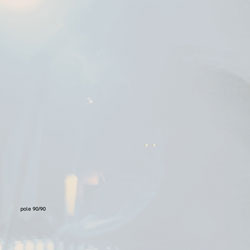 A few weeks backs, I reviewed Pole's 45/45EP, the first in Stefan Betke's new trinity of releases, and myskepticism was thinly veiled. The addition of percussion andtraditional instrumentation to the once purist minimal dub style thathe helped pioneer left a question on my tongue: Would Pole still berelevant if he sounded like everyone else? Like many influentialmusicians before him, Pole may have released his best work already, andis progressing into the next phase of his career: where grumpy musicgeeks criticize every new release using as many hackneyed clichephrases as possible. More often than not, those music geeks make validpoints and the introduction of spoken word / rap has sealed Betke'sfate in the music press. The hip hop flavored "Slow Motion" featuresFat Jon over a head-nodding groove that will please backpackers andokayplayers, but will undoubtedly alienate those hoping for more of hisglitchy dub. Fortunately, the instrumental version offers some reliefand bears more of a resemblance to his earlier work, despite theprominent drum loop. In an act of self-indulgent excess, the disccloses with an acapella version that you can alternatively play overthe older Pole songs that you'd rather hear. In the midst of all thisis "I Can't Hear," a woefully bad hybrid of Pole's new fuller soundwith John Zorn styled saxophone flatulence. Ultimately, all of thesequasi-intelligent vocals and paint-by-numbers beats presented here setsthe mood for what promises to be a letdown of a new full-length album.I haven't had the heart to disappoint myself fully by listening to theadvance copy of the CD that I've had now for weeks.
A few weeks backs, I reviewed Pole's 45/45EP, the first in Stefan Betke's new trinity of releases, and myskepticism was thinly veiled. The addition of percussion andtraditional instrumentation to the once purist minimal dub style thathe helped pioneer left a question on my tongue: Would Pole still berelevant if he sounded like everyone else? Like many influentialmusicians before him, Pole may have released his best work already, andis progressing into the next phase of his career: where grumpy musicgeeks criticize every new release using as many hackneyed clichephrases as possible. More often than not, those music geeks make validpoints and the introduction of spoken word / rap has sealed Betke'sfate in the music press. The hip hop flavored "Slow Motion" featuresFat Jon over a head-nodding groove that will please backpackers andokayplayers, but will undoubtedly alienate those hoping for more of hisglitchy dub. Fortunately, the instrumental version offers some reliefand bears more of a resemblance to his earlier work, despite theprominent drum loop. In an act of self-indulgent excess, the disccloses with an acapella version that you can alternatively play overthe older Pole songs that you'd rather hear. In the midst of all thisis "I Can't Hear," a woefully bad hybrid of Pole's new fuller soundwith John Zorn styled saxophone flatulence. Ultimately, all of thesequasi-intelligent vocals and paint-by-numbers beats presented here setsthe mood for what promises to be a letdown of a new full-length album.I haven't had the heart to disappoint myself fully by listening to theadvance copy of the CD that I've had now for weeks. 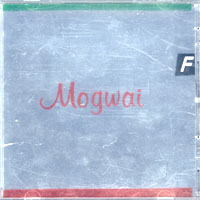 Mogwai have figured out how to take the energy of their long and noise-filled songs and condense them into even more atomic balls of might. Their fifth full-length is an album of rolling and mostly gentle melancholy. That isn't to say that Mogwai has lost their hard edge; the music does have its heavy moments.
Mogwai have figured out how to take the energy of their long and noise-filled songs and condense them into even more atomic balls of might. Their fifth full-length is an album of rolling and mostly gentle melancholy. That isn't to say that Mogwai has lost their hard edge; the music does have its heavy moments.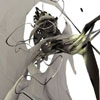 Inwiefern interessiert es den bzw. die Künstler vom Rezipentenverstanden zu werden bzw eine Kommunikationsbasis herzustellen ? SindAE uns tatsächlich weit voraus in jedweder Hinsicht oder haben sie sichmusikalisch nicht einfach eine Auszeit genommen um sich soweit imAbseitz zu positionieren das sich diese Frage garnicht mehr stellt ?
Inwiefern interessiert es den bzw. die Künstler vom Rezipentenverstanden zu werden bzw eine Kommunikationsbasis herzustellen ? SindAE uns tatsächlich weit voraus in jedweder Hinsicht oder haben sie sichmusikalisch nicht einfach eine Auszeit genommen um sich soweit imAbseitz zu positionieren das sich diese Frage garnicht mehr stellt ?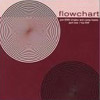 The fittingly but awkwardly titled Pre-2000 Singles and Comp Tracks Part Onebrings the listener back to Flowchart's earliest days, starting withthe first 7" recorded by the trio of O'Neal, Brodie Budd and CraigBottel and released in 1994 under the name Heroine. "High Phidelity"features the single-note guitar riffing and droning organ that led tothe Stereolab comparisons that dogged them for the next couple ofyears, while "Pronoun-U" is a noise-pop gem with an unmistakable MyBloody Valentine vibe. A name change to Flowchart quickly followed, asdid a slew of singles and compilation appearances, with the majority ofthose from 1994 to 1996 featured on this volume. Most of these werewritten and recorded by the original trio, with the work of thatline-up fitting pretty comfortably into the mid-90s space-rock andshoegazer cubbyholes, and generally comparing favorably to most othersimilarly minded artists from that time frame such as Stereolab, Fuxaand Windy & Carl. Around the two-thirds mark of the disc, we hitthe point where the group became a solo project for O'Neal, and thesound starts to vary considerably, ranging from twee guitar pop tonaïve stabs at atmospheric electronica. The set is wrapped up nicelywith an echo-laden cover version of The Sundays' "Here's Where TheStory Ends."
The fittingly but awkwardly titled Pre-2000 Singles and Comp Tracks Part Onebrings the listener back to Flowchart's earliest days, starting withthe first 7" recorded by the trio of O'Neal, Brodie Budd and CraigBottel and released in 1994 under the name Heroine. "High Phidelity"features the single-note guitar riffing and droning organ that led tothe Stereolab comparisons that dogged them for the next couple ofyears, while "Pronoun-U" is a noise-pop gem with an unmistakable MyBloody Valentine vibe. A name change to Flowchart quickly followed, asdid a slew of singles and compilation appearances, with the majority ofthose from 1994 to 1996 featured on this volume. Most of these werewritten and recorded by the original trio, with the work of thatline-up fitting pretty comfortably into the mid-90s space-rock andshoegazer cubbyholes, and generally comparing favorably to most othersimilarly minded artists from that time frame such as Stereolab, Fuxaand Windy & Carl. Around the two-thirds mark of the disc, we hitthe point where the group became a solo project for O'Neal, and thesound starts to vary considerably, ranging from twee guitar pop tonaïve stabs at atmospheric electronica. The set is wrapped up nicelywith an echo-laden cover version of The Sundays' "Here's Where TheStory Ends."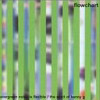 An ideal appendix/companion to the first Pre-2000 volume is Evergreen Noise Is Flexible/The Spirit of Kenny G,a disc that brings together two EPs that were originally released in1996 on either side of the membership shake-up. Evergreen features fourdrone-rock tracks from the O'Neal/Budd/Bottel trio (joined on twotracks by Bill Nace), and the 12-minute title track holds an especiallystrong whiff of mid-90s Stereolab with its hypnotic guitar line,motorik drum rhythms, waves of moody organ and synth, and breathyvocals that are barely discernable beneath the swirling instrumentaldin. The point on this disc where Evergreen ends and the Kenny Gmaterial begins is an easy one to spot, as the second EP kicks of witha funky, "Theme From Shaft"-style guitar riff and clear baritone vocalsintoning the strange statement "And I write my diary / In the spirit ofKenny G." Like the later tracks on the Part One anthology, this wesbasically a Sean O'Neal solo record, and the five tracks veer in toneand style from the punchy "E-Flare Pop" (a pretty humorous ode to goingto a rave and tripping on a combination of Ecstasy and Vapo-Rub) to theatmospheric ambient-drone of "Glorious and Prosperous" and "DrunkenMini-Musik."
An ideal appendix/companion to the first Pre-2000 volume is Evergreen Noise Is Flexible/The Spirit of Kenny G,a disc that brings together two EPs that were originally released in1996 on either side of the membership shake-up. Evergreen features fourdrone-rock tracks from the O'Neal/Budd/Bottel trio (joined on twotracks by Bill Nace), and the 12-minute title track holds an especiallystrong whiff of mid-90s Stereolab with its hypnotic guitar line,motorik drum rhythms, waves of moody organ and synth, and breathyvocals that are barely discernable beneath the swirling instrumentaldin. The point on this disc where Evergreen ends and the Kenny Gmaterial begins is an easy one to spot, as the second EP kicks of witha funky, "Theme From Shaft"-style guitar riff and clear baritone vocalsintoning the strange statement "And I write my diary / In the spirit ofKenny G." Like the later tracks on the Part One anthology, this wesbasically a Sean O'Neal solo record, and the five tracks veer in toneand style from the punchy "E-Flare Pop" (a pretty humorous ode to goingto a rave and tripping on a combination of Ecstasy and Vapo-Rub) to theatmospheric ambient-drone of "Glorious and Prosperous" and "DrunkenMini-Musik."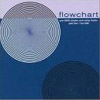 The third CD in this retrospective trilogy is Pre-2000 Singles and CompTracks Part Two,a disc that gathers widely scattered tracks from 1997 to 1999. Thefirst two tracks provide a solid link to the previous volume. "RainbowHotel" is a quirky pop number recorded with a full band and "BasementNoise is Flexible" is a somewhat fractured sounding outtake from thegroup's original line-up. Things change considerably from track threeonwards, as O'Neal is joined by new partner Erin Anderson and theguitars are pretty much abandoned in exchange for electronics andsamples. At first, the naïve melodies and repetitive vocal samples thatappear on the bulk of these tracks are cute and fun, but the formulasoon wears thin, and "cute and fun" quickly becomes "trite andannoying". They were probably fine when they were taken in small dosesas 7" singles and compilation appearances, but 45 minutes of tracksthat are so simple and saccharine is just too much to take at once.Thankfully, the "cute-tronica" mold is broken towards the end of thedisc with a couple of pieces that are very ambient and atmospheric intone, setting the stage for the more satisfying sounds that Flowcharthas been responsible for from the year 2000 forward.
The third CD in this retrospective trilogy is Pre-2000 Singles and CompTracks Part Two,a disc that gathers widely scattered tracks from 1997 to 1999. Thefirst two tracks provide a solid link to the previous volume. "RainbowHotel" is a quirky pop number recorded with a full band and "BasementNoise is Flexible" is a somewhat fractured sounding outtake from thegroup's original line-up. Things change considerably from track threeonwards, as O'Neal is joined by new partner Erin Anderson and theguitars are pretty much abandoned in exchange for electronics andsamples. At first, the naïve melodies and repetitive vocal samples thatappear on the bulk of these tracks are cute and fun, but the formulasoon wears thin, and "cute and fun" quickly becomes "trite andannoying". They were probably fine when they were taken in small dosesas 7" singles and compilation appearances, but 45 minutes of tracksthat are so simple and saccharine is just too much to take at once.Thankfully, the "cute-tronica" mold is broken towards the end of thedisc with a couple of pieces that are very ambient and atmospheric intone, setting the stage for the more satisfying sounds that Flowcharthas been responsible for from the year 2000 forward.  Inducing the Sleep Sphere opens with some warm electronic humsthat bend around the ears in a pleasant way, before being joined bygently melodic electric guitar, drums, and a wall of fuzz guitaratmospherics. Sounds nice, doesn't it? Unfortunately, this iswell-mined territory. The melodies, the swirling Kevin Shields guitarnoise, the atmospheric production: it's been heard all before. It'svirtually impossible to discuss The Land of Nod without comparing themto My Bloody Valentine, Slowdive, Spacemen 3 or a gaggle of otheratmospheric shoegazer bands that did it first, and did it better.Though they are obviously talented instrumentalists, The Land of Nodsimply refuse to reveal any personality or originality that would makethis music more than just the sum of its influences. "A Sequence ofSpeed" is so indebted to the motorik beat and punk-light melodies ofkrautrock band Neu! that it seems like Michael Rother and KlausDinger—and not The Land of Nod—should be credited for the song. "LooseContact" is a lone bright spot: a cavernous ambient piece that soundslike Jimi Hendrix riffing on "The Star-Spangled Banner" at the bottomof a mine shaft. "Le Sommet a Mont Venoux" is actually nothing morethan the tune of "Frere' Jacques" repeated ad nauseum with lots ofreverb and French dialogue samples. The rest of the tracks are tepidretreads of Mogwai-esque drone-rock boredom, with some predictablypretty melodies lifted directly from Durutti Column. This music reallyis capable of inducing sleep, and for all the wrong reasons.
Inducing the Sleep Sphere opens with some warm electronic humsthat bend around the ears in a pleasant way, before being joined bygently melodic electric guitar, drums, and a wall of fuzz guitaratmospherics. Sounds nice, doesn't it? Unfortunately, this iswell-mined territory. The melodies, the swirling Kevin Shields guitarnoise, the atmospheric production: it's been heard all before. It'svirtually impossible to discuss The Land of Nod without comparing themto My Bloody Valentine, Slowdive, Spacemen 3 or a gaggle of otheratmospheric shoegazer bands that did it first, and did it better.Though they are obviously talented instrumentalists, The Land of Nodsimply refuse to reveal any personality or originality that would makethis music more than just the sum of its influences. "A Sequence ofSpeed" is so indebted to the motorik beat and punk-light melodies ofkrautrock band Neu! that it seems like Michael Rother and KlausDinger—and not The Land of Nod—should be credited for the song. "LooseContact" is a lone bright spot: a cavernous ambient piece that soundslike Jimi Hendrix riffing on "The Star-Spangled Banner" at the bottomof a mine shaft. "Le Sommet a Mont Venoux" is actually nothing morethan the tune of "Frere' Jacques" repeated ad nauseum with lots ofreverb and French dialogue samples. The rest of the tracks are tepidretreads of Mogwai-esque drone-rock boredom, with some predictablypretty melodies lifted directly from Durutti Column. This music reallyis capable of inducing sleep, and for all the wrong reasons.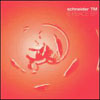 As an introduction to the music of Dirk Dresselhaus, this EP doesn't work so well. The music is whimsical and entertaining, but out of the six songs that make up 6 Peace, three are remixes and one is the original version of "Reality Check" from the Zoomer album. The two videos that are included on this CD ("Frogtoise" and "Reality Check") can be found online at Schneider TM's website along with two free songs. If it's an introduction that is needed, Schneider TM's website is the place to go.
As an introduction to the music of Dirk Dresselhaus, this EP doesn't work so well. The music is whimsical and entertaining, but out of the six songs that make up 6 Peace, three are remixes and one is the original version of "Reality Check" from the Zoomer album. The two videos that are included on this CD ("Frogtoise" and "Reality Check") can be found online at Schneider TM's website along with two free songs. If it's an introduction that is needed, Schneider TM's website is the place to go. Giddy, cute, charming, sexy, and fun songs fill this full-length album.A mishmash of smooth production, traditional instrumentation,electronic flourishes, and about five different vocal styles makes foran afternoon well spent dancing about or doing chores in the housewhile boogie-ing down. Ské is a group of song-writers and performersfrom Iceland that know how to write a good hook and keep thingsinteresting. While some of the music with its child-like vocalpresentation (see "Julietta 1" or "Julietta 2") is a little too cute oradorable for me, songs like "Stuff" and "Cowboy" are great rock songsfull of energy and feeling. The acoustic guitar plays a central rolethroughout most of the album, but all the little additions sprinkledabout the music really make the album that much better. "Stuff" is avocal- and rhythm-led song, but the symphonic elements that float inthe background work subtly to create a completely self-sufficientmusical environment that stands extremely well on its own. "Le Tram" issound as silk. The music is simple, the arrangement gentle and flowing,and the vocals almost story-like. It's as if I'm being lulled to sleepeverytime I hear it. The final portion of the album throws a soniccurveball and starts playing things out a bit more heavily. "LeckMeinen Stiefel Ab" is a great mix of heavy, distorted percussion and anaccordian that sounds like its about to spasm into a thousand tinypieces. "Lola" closes things out in a very lurid and dramatic mask.Imagine a beautiful woman in one of those red dresses that flower outat the bottom swirling around in a candle-lit restaurant at night andthen associate that picture with a sort of French/Spanish music thatmakes it easy to move the shoulders and hips about. It even starts outwith a rather suggestive sample: "This is called Lola... the naughtyLola."
Giddy, cute, charming, sexy, and fun songs fill this full-length album.A mishmash of smooth production, traditional instrumentation,electronic flourishes, and about five different vocal styles makes foran afternoon well spent dancing about or doing chores in the housewhile boogie-ing down. Ské is a group of song-writers and performersfrom Iceland that know how to write a good hook and keep thingsinteresting. While some of the music with its child-like vocalpresentation (see "Julietta 1" or "Julietta 2") is a little too cute oradorable for me, songs like "Stuff" and "Cowboy" are great rock songsfull of energy and feeling. The acoustic guitar plays a central rolethroughout most of the album, but all the little additions sprinkledabout the music really make the album that much better. "Stuff" is avocal- and rhythm-led song, but the symphonic elements that float inthe background work subtly to create a completely self-sufficientmusical environment that stands extremely well on its own. "Le Tram" issound as silk. The music is simple, the arrangement gentle and flowing,and the vocals almost story-like. It's as if I'm being lulled to sleepeverytime I hear it. The final portion of the album throws a soniccurveball and starts playing things out a bit more heavily. "LeckMeinen Stiefel Ab" is a great mix of heavy, distorted percussion and anaccordian that sounds like its about to spasm into a thousand tinypieces. "Lola" closes things out in a very lurid and dramatic mask.Imagine a beautiful woman in one of those red dresses that flower outat the bottom swirling around in a candle-lit restaurant at night andthen associate that picture with a sort of French/Spanish music thatmakes it easy to move the shoulders and hips about. It even starts outwith a rather suggestive sample: "This is called Lola... the naughtyLola."  I'll never forget the first time I saw Love and Rockets live. I was a teenager and the clash of psychedelia, black leather, loud guitars and pumping beats was as sexy as it was cool. I'll also never forget the last time I saw Love and Rockets live. A new album was out but the feverish energy seemed such a thing of the past. They felt like they were reluctantly performing their older songs. The closing remark will always stick in my mind: "Buy our albums so we can keep doing this." Maybe the band thinks that Lift was some of their best material, but they haven't convinced me yet.
I'll never forget the first time I saw Love and Rockets live. I was a teenager and the clash of psychedelia, black leather, loud guitars and pumping beats was as sexy as it was cool. I'll also never forget the last time I saw Love and Rockets live. A new album was out but the feverish energy seemed such a thing of the past. They felt like they were reluctantly performing their older songs. The closing remark will always stick in my mind: "Buy our albums so we can keep doing this." Maybe the band thinks that Lift was some of their best material, but they haven't convinced me yet.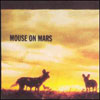 This is a record imbued with a kind of subtle beauty that I've simplynot heard in a long time. I've never paid much attention to Mouse onMars and my experience with this album was akin to my first experiencewith Sonic Youth; multiple listens reveal multiple dimesions of soundand with each listen the music becomes more and more enjoyable. Glamwas originally released as a limited edition vinyl in 1998 and wasintended to the be the soundtrack to a movie about love and drugs;appropriately the music is claustraphobic, hazy, and joyous. Denselayers of amorphous sound creep about the air like a fine mist; this ismusic that can be breathed in, it leaves a shiny dew on my skin afterI've listened to it. "Port Dusk" starts things off on an almostbeatless level and weaves a blanket with warm peals of sound andunwavering showers of heavy drones. There are beats throughout most ofthe album and many of them force my foot to tap and my head to back andforth, but the rhythms are almost subliminal. They more or less form aperfect seam with the short stabs of melody and robust undercurrentsthat run beside them. "Flim" and "Tiplet Metal Plate" are twonoticeable and exceptional anomalies. "Flim" is a plain ofrhythm-driven butterflies that meander about carelessly while "TipletMetal Plate" is more akin to a hammer falling on and through my skull;it's a punchy, schizophrenic, and completely ecstatic kick to the face.The bonus tracks included are completely hit and miss. "Snap Bar" is aworm-filled endurance test that simply goes nowhere while "Pool, Smoothand Hidder" is a rolling sonic highway and "Heizchase Nailway" feelslike an undulating mass consuming everything in its path. The last twoaren't bad, but when they're taken out of the mix and Glam islistened to in its original form, the album seems to have a more fluidcontinuity that makes it more enjoyable. These are minor complaints,however.
This is a record imbued with a kind of subtle beauty that I've simplynot heard in a long time. I've never paid much attention to Mouse onMars and my experience with this album was akin to my first experiencewith Sonic Youth; multiple listens reveal multiple dimesions of soundand with each listen the music becomes more and more enjoyable. Glamwas originally released as a limited edition vinyl in 1998 and wasintended to the be the soundtrack to a movie about love and drugs;appropriately the music is claustraphobic, hazy, and joyous. Denselayers of amorphous sound creep about the air like a fine mist; this ismusic that can be breathed in, it leaves a shiny dew on my skin afterI've listened to it. "Port Dusk" starts things off on an almostbeatless level and weaves a blanket with warm peals of sound andunwavering showers of heavy drones. There are beats throughout most ofthe album and many of them force my foot to tap and my head to back andforth, but the rhythms are almost subliminal. They more or less form aperfect seam with the short stabs of melody and robust undercurrentsthat run beside them. "Flim" and "Tiplet Metal Plate" are twonoticeable and exceptional anomalies. "Flim" is a plain ofrhythm-driven butterflies that meander about carelessly while "TipletMetal Plate" is more akin to a hammer falling on and through my skull;it's a punchy, schizophrenic, and completely ecstatic kick to the face.The bonus tracks included are completely hit and miss. "Snap Bar" is aworm-filled endurance test that simply goes nowhere while "Pool, Smoothand Hidder" is a rolling sonic highway and "Heizchase Nailway" feelslike an undulating mass consuming everything in its path. The last twoaren't bad, but when they're taken out of the mix and Glam islistened to in its original form, the album seems to have a more fluidcontinuity that makes it more enjoyable. These are minor complaints,however.
